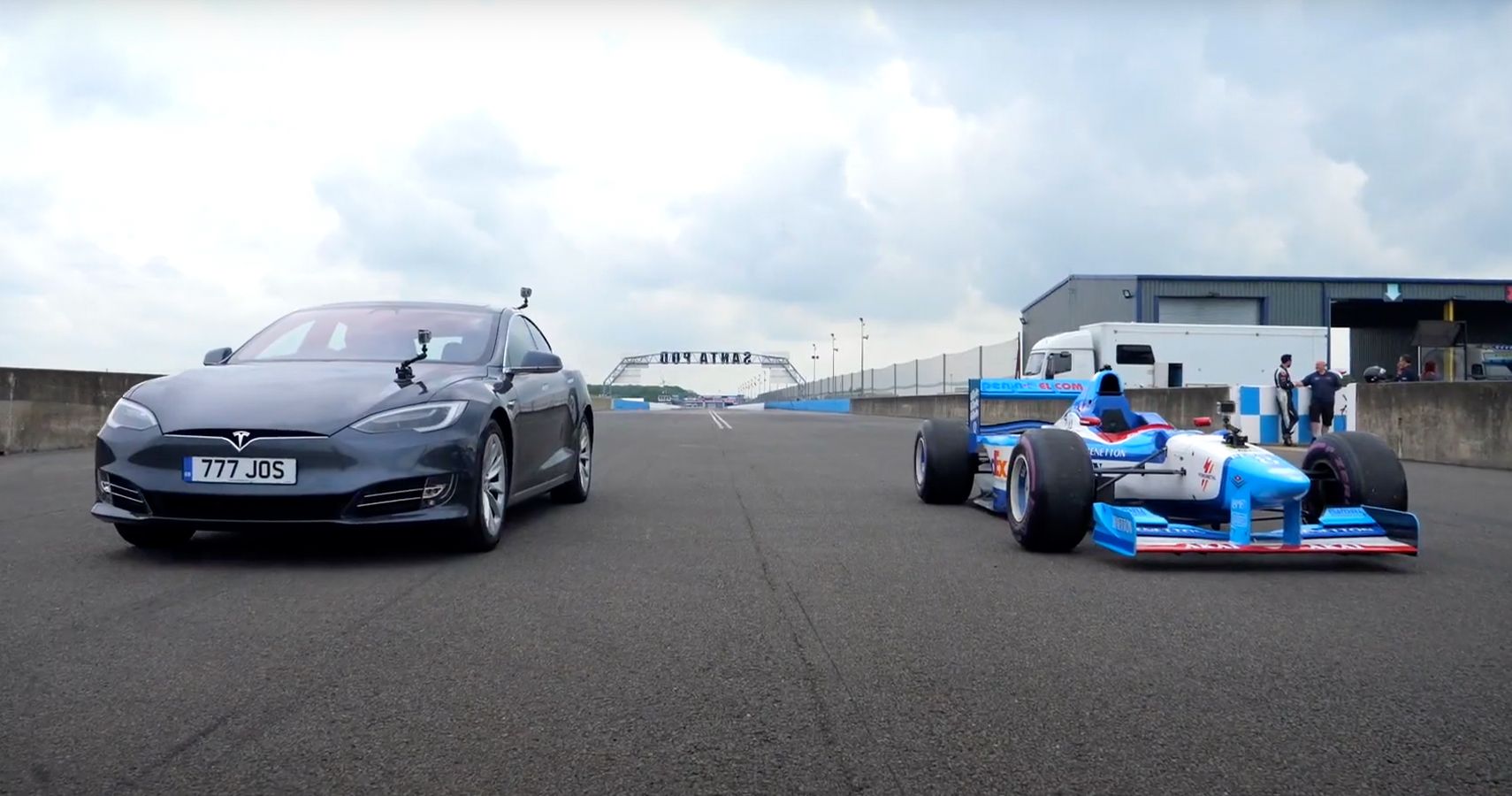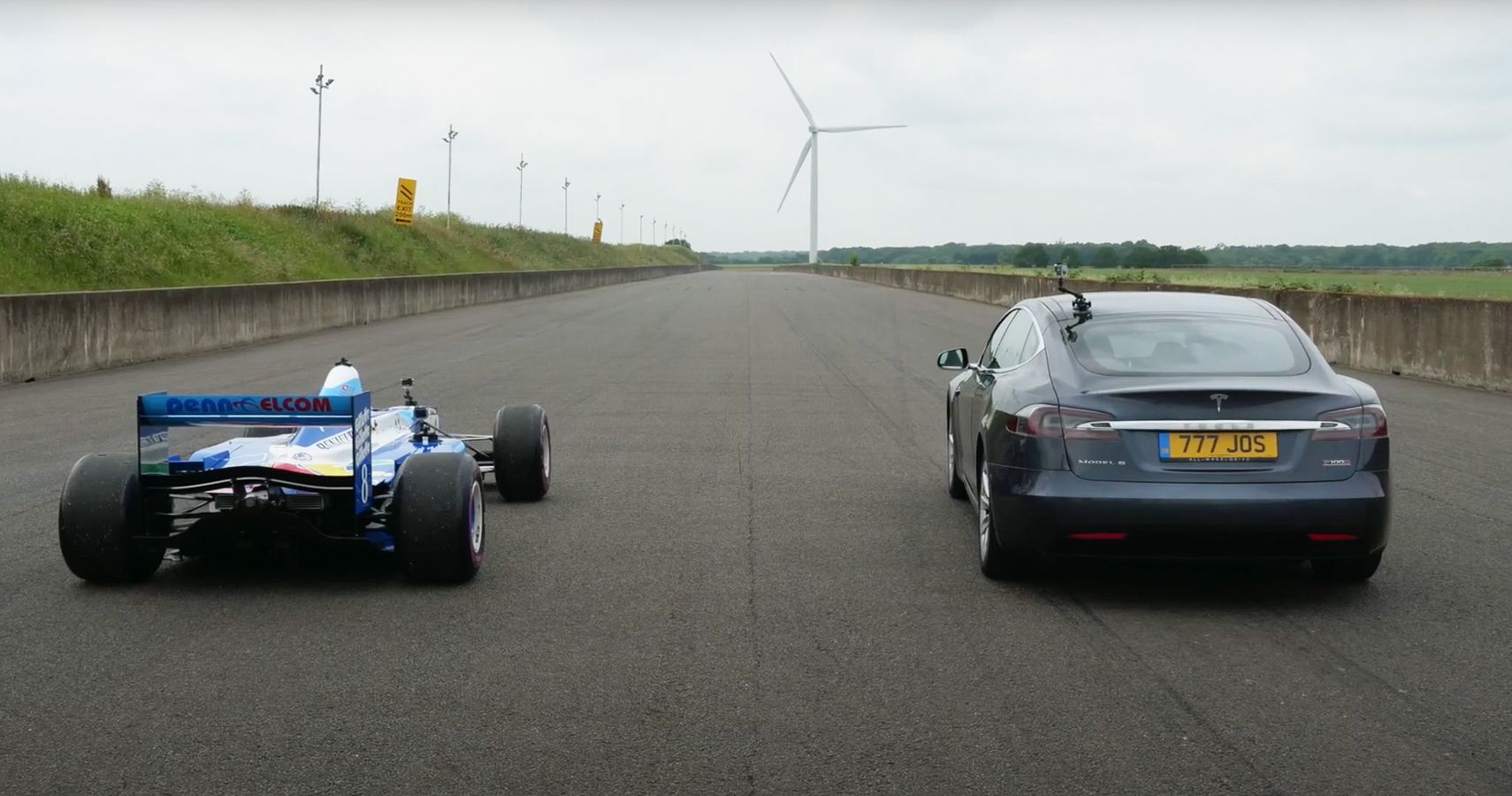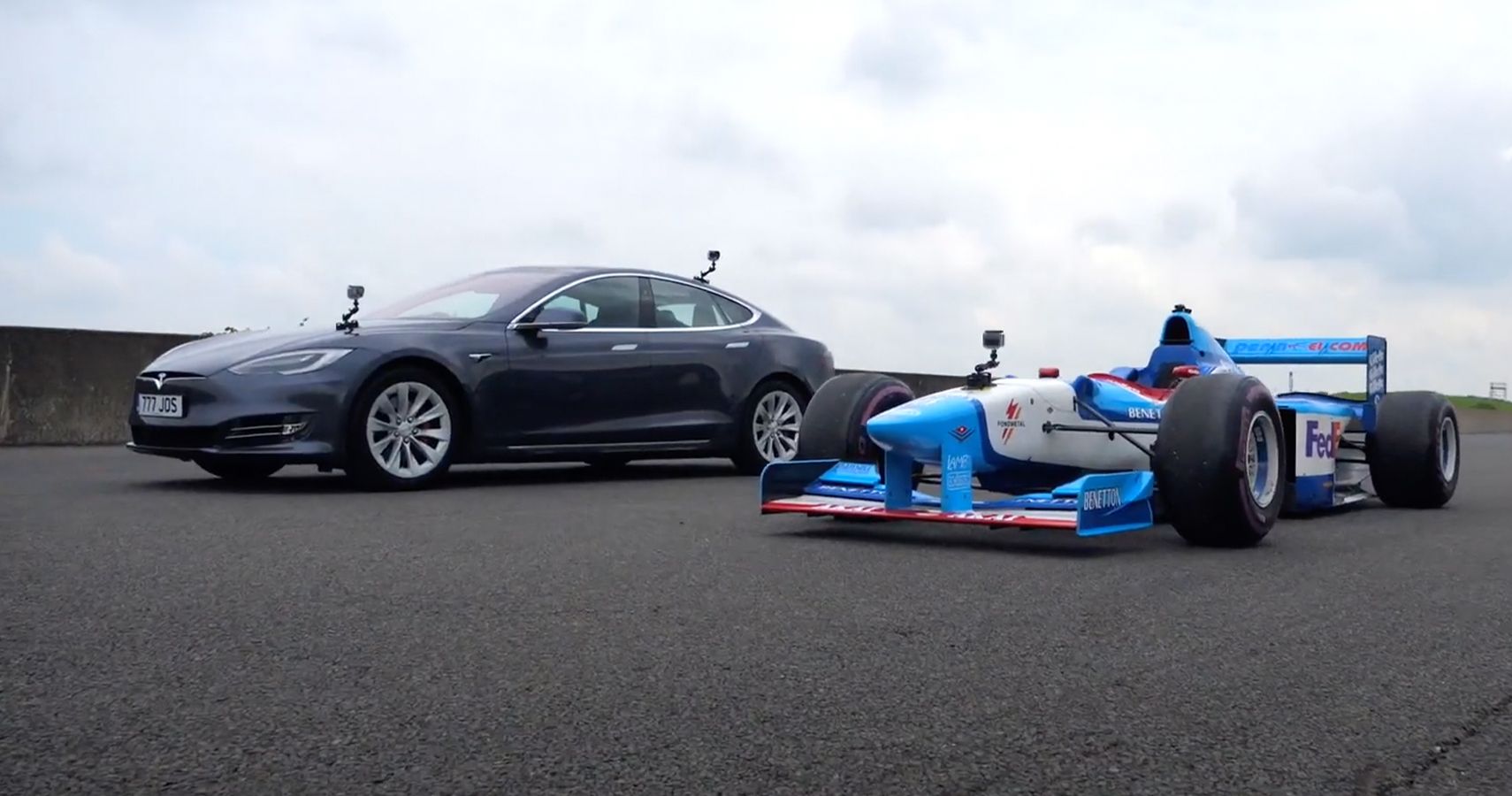Elon Musk believed that electric cars needed to render all internal-combustion vehicles obsolete—and Tesla largely achieved that goal, at least in performance terms, by cranking out all-wheel-drive commuters that can head down to the drag strip and challenge legit supercars. Now, supercar and hypercar manufacturers have turned to electrification as the clear and obvious future, while motorsport jumped in the game with the Formula E racing series. But what about a legit racecar? Well, the YouTube channel Driven just released a new video featuring a Tesla Model S P100D hitting the quarter-mile against a V10-powered Formula 1 racecar to find out.
Tesla And Formula 1 Stats
The racecar hails from an older era of F1, when naturally aspirated V10 engines still wailed around the world's greatest circuits. But the question of instantaneously available torque on tap from the Tesla four-door, which Driven explains is officially rated at 671 horsepower and 701 lb-ft of torque, allows the hefty car to hit 6.2 miles per hour in only 2.7 seconds—despite tipping the scales at nearly 5,000 pounds.
Lightweight Power Vs All-Wheel-Drive Traction
The Benetton-liveried F1 car, meanwhile, weighs right around 1,150 pounds and pumps 770 horsepower to the rear wheels only (those wheels are also shod is racing slicks). In terms of power-to-weight, Driven also claims this F1 car boasts 1,466 horses per ton, which would notch in more than today's more technologically complex racers, too. But is it enough to overcome a roadgoing, production-model Tesla?
Still A Big Difference Between Commuters And Racers
In the standing quarter-mile, the Tesla gets a noticeable jump off the line thanks to the traction and torque advantages. As soon as the Benetton F1 car finds grip, however, the lower aero profile and lightweight construction comes into play in a big way. Watch the video to see whether this purpose-built internal-combustion screamer can still play with the big boys, even if it hails from an entirely different era of motorsports history. As a bonus, Driven also puts the two cars through braking and moose tests to keep things at least somewhat more realistic than strictly measuring raw straight-line acceleration.
Sources: youtube.com



